
The Ruger Mini-14 and Mini-30 may have never been adopted for mainline military service, but their features still make them a very practical choice for many American shooters.
Few modern rifles have enjoyed such a love/hate relationship with the gun community as the Ruger Mini-14. Aspects of its design and marketing have resulted in criticism as well as praise, but we’ll dive into those details later on. Regardless of your own opinion on the Mini-14, it’s certainly proven itself to have staying power and has done a good job of filling a niche that many Americans require. It may not be the rifle for you, but that doesn’t mean it doesn’t have a place in the contemporary gun market.

The Mini-14 was officially released in 1973. Its design took advantage of Ruger’s advanced investment casting capabilities and was centered around a gas operation system and action that was very similar to those of the full-size M1 Garand and M14 rifles it resembles. While the Mini-14 may look very similar to its larger counterparts, it is substantially smaller and shares no interchangeable parts.
Mini-14 History: Too Late To Make A Difference
When the Mini-14 was introduced, there was something of a market vacuum. The space-age M16 had only been first fielded in Vietnam in 1965, and its initial problems resulted in a poor reputation that lasted many years. Many soldiers would never forgive the subpar reliability they experienced with their M16s, especially after facing enemies armed with reliable AK-47 and SKS rifles.
The M14, on the other hand, was an extremely rugged and powerful rifle that was praised for being much more reliable than the M16. Just as large as the M1 Garand, which itself saw considerable jungle warfare against the Japanese during WWII and in Korea shortly after, the M14 was not well suited for the tight spaces and close-range, high-volume firefights in which the AK-47 excelled. It was reliable enough, but it wasn’t well-suited to the environment it was pressed into.
Going to a rifle better than the M16 at this time would not only have been a major embarrassment to the government, but it could have also meant co-opting a Kalashnikov design and acknowledging that the Russians had made a better service rifle. While not necessarily intended for use as a service rifle, the introduction of the Mini-14 in 1973 was an interesting juncture of private venture and military features.
The lead engineer for the Ruger Mini-14’s development was L. James “Jim” Sullivan, the man responsible for originally scaling down Eugene Stoner’s AR-10 into the now ubiquitous AR-15. Since both miniaturization and the relatively new .223 Remington cartridge were things that Sullivan was already familiar with, his heading of the project was a natural choice.
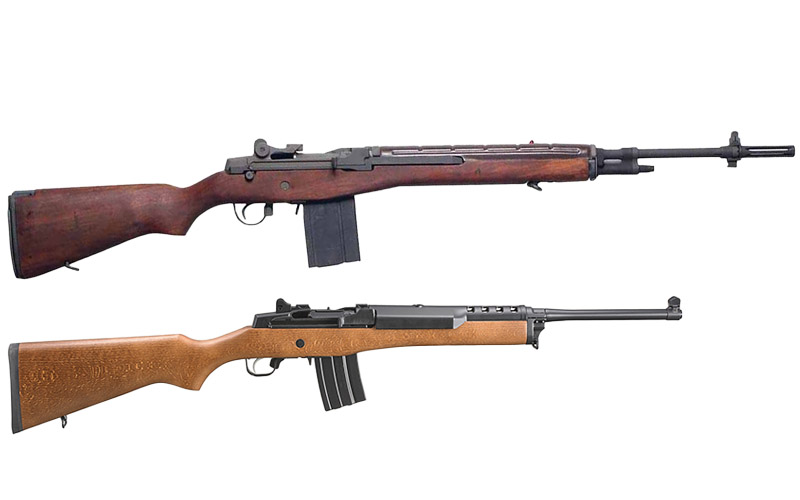
By the time the Mini-14’s design was finalized, the rifle essentially used a Garand action. This resulted in a superbly reliable and clean-running gun, neither of which were accurate descriptors of the M16. While the U.S. military was aware of the design, the last helicopter left Saigon in 1975, making the rifle’s 1973 introduction too late for there to be any significant military interest in the benefits of the Mini-14.
Commentary on the rifle’s design was interesting. The competing Soviet Union was issuing weapons that largely shared the same manual of arms despite variances in caliber or role. If you knew how to use an AK-47, you could also operate an RPK, SVD and many other weapons in the Soviet arsenal. While the American suite of arms had great potential to accomplish something similar, the adoption of the M16 prevented this by introducing an entirely new manual of arms. It would have made tremendous sense to issue another rifle based on the Garand action; two or three generations of soldiers had already used them at that point in history and it was a mature platform. Miniaturizing it would have made sense at the time as a way to expedite training, however, the selection process for the M16 was rife with corruption and it resulted in a large amount of preventable death early on. Much of the M16’s initial problems were caused by the issuing of ammo with the incorrect powder type, however, and most of the reliability problems had been addressed by the introduction of the M16A1 in 1968.
Gun Bans And The Mini-14
With little prospect of military adoption after 1975, the Mini-14 would go on to focus on commercial sales. It likely would have faded off into the used racks at your local gun shop along with dozens of sporting rifles from the ‘60s and ‘70s if not for the various so called “assault weapons” bans across the country that prohibited certain cosmetic features. The Mini-14, for much of its recent history, has been a sanitized ‘safe’ semi-auto that only makes it onto the ban lists when a politician is extra dedicated to securing the bleeding-heart vote.
The rifle’s association with assault weapon bans became a source of controversy during the dark days of the ‘90s, as Bill Ruger himself penned an infamous letter in 1989 that voiced support for certain aspects of gun control, including limiting magazine capacity. This resulted in a great deal of speculation, as the Mini-14 was exempted from the ban, and some are convinced to this day that this was a result of Ruger’s personal lobbying for what some called ‘reasonable’ measures. Whatever the truth in the matter is, Bill Ruger, a true luminary in gun design and manufacture, is seldom mentioned nowadays as a result of what many feel was a deliberate betrayal for company benefit. The nail in the coffin for many was that, in the very same letter, Ruger essentially agreed with the notion that ‘reasonable’ people didn’t need guns with certain features, labeling his own designs as mere sporting implements.
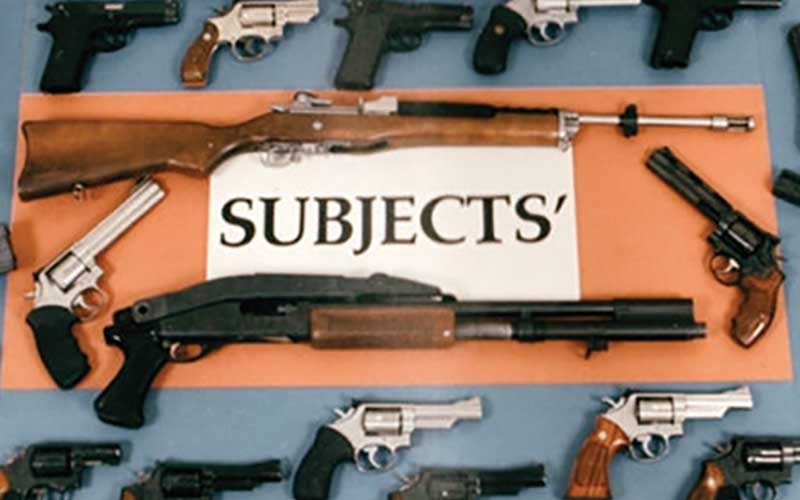
Ruger Mini-14, Miami Shootout And Beyond
Ruger’s controversy was further compounded as militia movements in the ‘90s gravitated towards the Mini-14 and the fact that it was used by some very high-profile criminals, further damaging the whole ‘sporting’ notion. The 1986 Miami FBI Shootout was so bad for the FBI that they ended up completely changing their suite of arms after facing the Mini-14. Canada has seen two massacres with the Mini-14, and both of which dramatically changed Canadian gun laws. Likewise, Norwegian mass killer Anders Breivik and American serial killer Robert Hansen also used the Mini-14 in a less than desirable manner. The amazing part of the Mini-14’s history is that it not only dodged most bans, but it continued to maintain the reputation of a simple ranch or recreational rifle. Despite these terrible uses, the most famous individual to use the rifle has to be Hannibal Smith on the A-Team, and most are content to leave it that way.
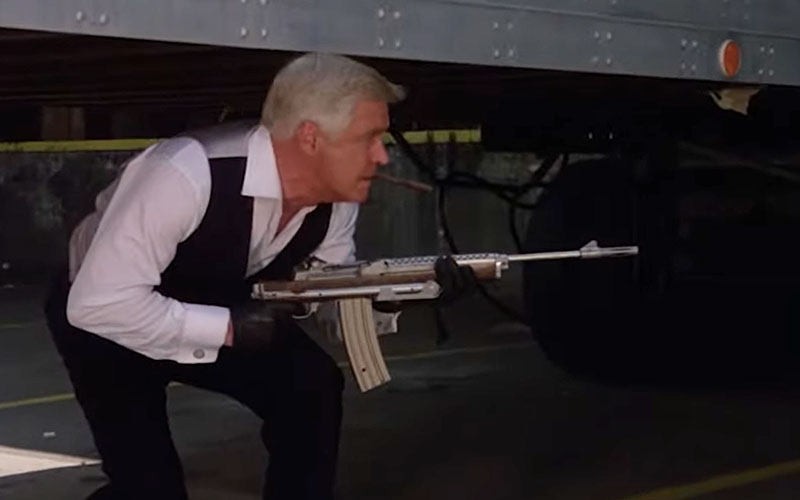
The Mini-14 Today
While not nearly as popular as the AR-15, the Mini-14 has seemingly overcome its mixed past and has become a common alternative for the AR in states that have adopted bans on cosmetic features such as pistols grips or flash hiders. The Mini-14 is perfect for this role; it is exceedingly reliable, and the new ones have eliminated many of the known issues with the design such as lackluster accuracy. The ‘vintage’ crowd likes it quite a bit, and thanks to the exploits of the A-Team, there is a healthy interest in TV replicas with folding stocks.
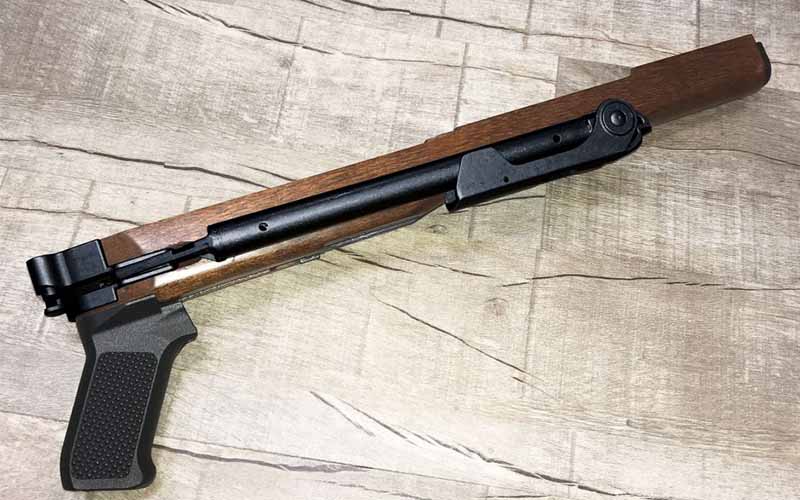
The rifle has been updated with modern features like a threaded muzzle to allow the mounting of a suppressor or other muzzle device. Currently, there are 16 models of Mini-14 available in the Ruger catalog, and an additional six of the Mini-30 variant.
Mini-14 Calibers
The Mini-14 and Mini-30 are currently offered in three calibers. The Mini-30 is only offered in 7.62x39mm for all six of the available models. The Mini-14 has 15 models chambered for 5.56 NATO, and one model chambered in .300 Blackout. All of them are mild recoiling and very reliable, the only exception being the .300 Blackout model when firing some types of subsonic ammunition without the aid of a suppressor, but this is true of most semi-auto .300 Blackout rifles and carbines.
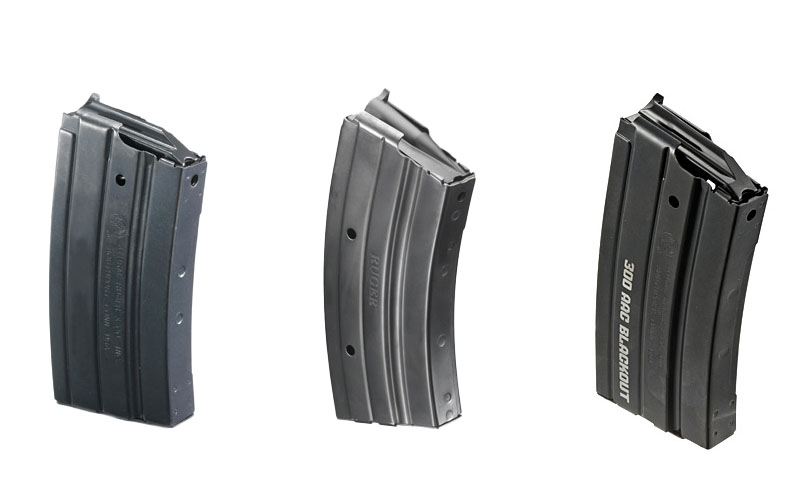
The 5.56 NATO-chambered rifles are the most common and offer a very soft shooting experience. Recoil is minimal and the rifle is very easy to use at medium distances using just iron sights. Unlike the larger M1 and M14/M1A rifle, the Mini-14 won’t bruise your cheekbone if you shoot nose to receiver. The Mini-14 is a suburb rifle when it comes to reliability, the Garand-style action is known for its ruggedness and ability to power through even when very dirty. The brass kicks out yards away in most cases and your odds of a double feed are very slim with one of these rifles.
AC-556
While not used by the American military in any real capacity, Ruger did introduce military and police versions of the Mini-14, most notably the select-fire AC-556. Government-type models did exist, some with integrated bayonet lugs. It has been over twenty years since Ruger produced this version, and they have since stopped servicing them. The AC-556 did achieve some popularity in police circles, but it never gained mass traction either. A substantial number of AC-556 rifles ended up in Hollywood, where they have achieved lasting fame.
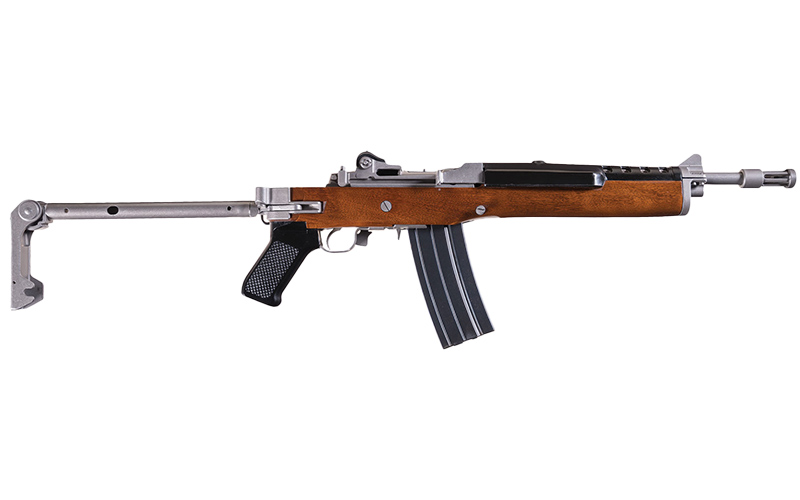
France has widely distributed their version called the A.M.D to various police units, and various world militaries and security forces have used other modified variants of the Mini-14. It has never been a nation’s primary service rifle, though it has substituted for one in small or minor regiments across the globe. The curious thing about this is that the rifle has enviable reliability, even better than many existing service rifles and is easily on par with most AK variants. Time and circumstance ultimately led to its footnote status as a military arm, as it was seldom in the right place at the right time to be considered.
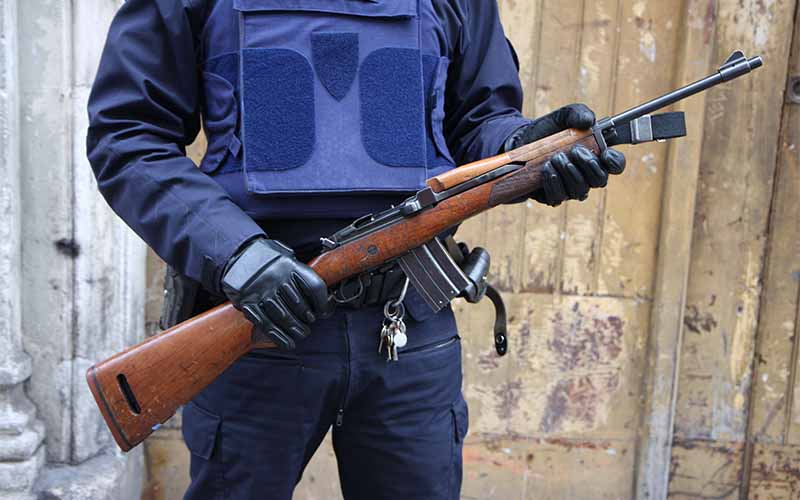
Mini-14 Vs. Mini-30
Ruger’s move to make their Mini-14 in .30-caliber came as the result of the (bygone) days of cheap Russian and ComBloc imports of 7.62x39mm guns and ammunition. The Mini-30 was born as a result and has remained largely unchanged since it was introduced. To this day, the Mini-30 remains a popular short-range deer rifle in some parts of the country, but it is largely overlooked for the AK and AR platforms thanks to the large aftermarket support for the latter two. Aside from some parts and chambering, the Mini-30 and Mini-14 are the same rifle in all the ways that matter. Time will tell how long the Mini-30 remains in production as the squeeze for all things Russian has already started. Unless a US maker steps up with cheap 7.62x39mm, the fate of all guns in the chambering is in doubt. While that day might not be today, take a look at what remains of a once-thriving surplus market once the supply is cut off. The 5.56 NATO Mini-14 is a much better choice today, as at least that ammo is made in massive quantities Stateside.
Read More: Russian Ammo Ban
Mini-14 Vs. AR-15
The AR-15 is certainly the rifle to have today. Not only is it the most popular firearm in the country, but it can also be readily made from tens of thousands of parts from hundreds of different companies. It is rare to find an AR that hasn’t been customized in some way, and outside of a gun shop rack, it is hard to find two that are exactly alike. Modularity is the name of the game, and the AR platform is king of the hill as a result. The Mini-14 isn’t modular in the same way. You can change the stock or add an optics rail, but that’s about the extent of what you can do with the rifle. This isn’t an inherently bad thing, just a fact to be aware of when looking to make a purchase. Unlike the AR, you can’t easily change calibers or swap in a handguard that you like with hand tools.
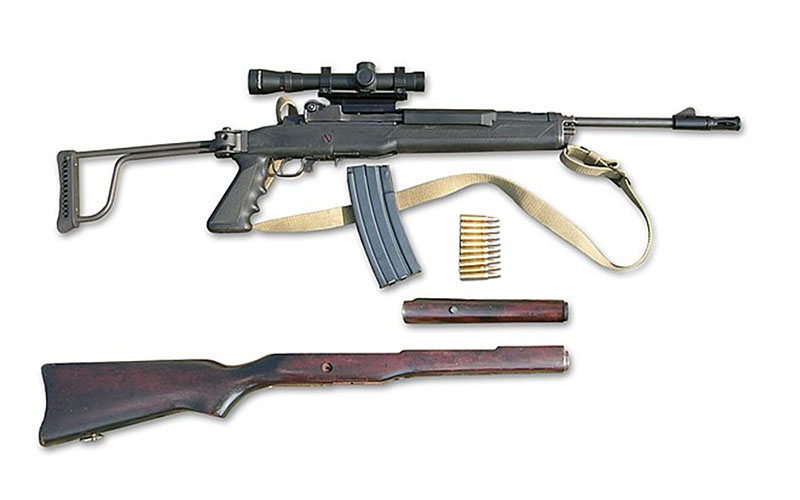
Another thing the Mini-14 has against it is that it isn’t as accurate as the AR. A parts-build .224 Valkyrie AR with a Faxon Firearms barrel, made in a few minutes with just a bench block and some wrenches, will generally be sub-MOA accurate at 800 yards using Federal 90gr Match factory loads. If you are even slightly competent at building and firing a rifle, this is the expected result. The Mini-14 in the past has not enjoyed this reputation and was expected to deliver only around 3-inch groups at 100 yards with factory loads. Newer Mini-14 rifles are much more accurate, easily 1.5-MOA rifles out to about 400 yards, which is about the limit most folks can hit an IDPA target with iron sights as the Mini-14 comes with. Interestingly, the .300 Blackout versions have been very accurate, and even with subsonic ammo are easily on par with the AR in that caliber.
Common Mini-14 Uses
Today, the Mini-14 shines the brightest in states that have banned firearms with certain cosmetic features. Some call this class of rifle an ‘AR Alternative’. The irony of this is that the premonition Bill Ruger had regarding these bans came true, maybe even being a self-fulfilling prophecy of sorts. The Mini-14 is a fantastic semiautomatic rifle, but when put head-to-head against the AR-15 in a free state with no bans in place, it really can’t compete commercially.
The Mini-14 is commonly treated as a ranch or saddle rifle in many places, it is also a choice rifle for dense swampy areas thanks to its reliability and resistance to wet, dirty climates. Because it can be readily adapted to a folding stock, it is desired for its compact nature and, depending on the stock, can be fired folded if necessary.
Mini-14 Design Updates
Ruger has recently set about updating their product line and the Mini-14 has certainly benefitted from this. The new models are much more consistent and accurate when compared to earlier versions, and thankfully the reliability is just as good. The modern Mini-14 is a fantastic rifle, and after years of spotty accuracy being the sore spot of the design, there isn’t much to complain about anymore. If you find yourself needing something compact and light while also extremely rugged and reliable, the Mini-14 is worth a look.

Mini-14 & Mini-30 Model Roundup:
MINI-14 RANCH RIFLE

The most common Mini-14 variant, the Ranch rifle is light and compact and all models are chambered for 5.56 NATO. The versions offered today have several features to pick from. Distributor exclusive models are available with colorful laminate stocks. The standard versions are available in blued or stainless with wood or synthetic stocks. The standard barrel length model is 18.5-inches and carries an MSRP of around $1,300.
MINI-14 TACTICAL .300 BLACKOUT

The only Mini-14 chambered for the popular .300 Blackout, the Tactical model comes with a black finish, threaded muzzle, and shorter 16” barrel. This is obviously the version to look at if you’d like to pair it with a suppressor. MSRP is $1,339.
MINI-30

All models of Mini-30 are chambered for 7.62x39mm, but are otherwise mostly identical to the Mini-14. Some models have the 18.5” barrel, while others feature the shorter 16-inch barrel. Versions are available with either wood or synthetic stocks but have slightly higher MSRPs of $1,300-1,400.
For more information on the Ruger Mini-14 and Mini-30, please visit ruger.com.
More Classic Military Arms:
- The M16: The Rifle That Was Never Supposed To Be
- The AKM: Acme Of AKs
- The H&K G3: The World's Most Successful Battle Rifle
- The FN FAL: Right Arm Of The Free World
- SKS Collecting And Identification

Next Step: Get your FREE Printable Target Pack
Enhance your shooting precision with our 62 MOA Targets, perfect for rifles and handguns. Crafted in collaboration with Storm Tactical for accuracy and versatility.
Subscribe to the Gun Digest email newsletter and get your downloadable target pack sent straight to your inbox. Stay updated with the latest firearms info in the industry.

![Best Concealed Carry Guns In 2025 [Field Tested] Wilson Combat EDC X9S 1](https://gundigest.com/wp-content/uploads/Wilson-Combat-EDC-X9S-1-324x160.jpg)


![Best 9mm Carbine: Affordable PCCs [Tested] Ruger Carbine Shooting](https://gundigest.com/wp-content/uploads/Ruger-Carbine-Shooting-100x70.jpg)
![Best AR-15: Top Options Available Today [Field Tested] Harrington and Richardson PSA XM177E2 feature](https://gundigest.com/wp-content/uploads/Harrington-and-Richardson-PSA-XM177E2-feature-100x70.jpg)

I love the mini 14. Fits under my arm like a glove, easy to carry, I’ve 2 , both dependable.
Doesn’t ruin a deer, I pick my shots. Great .223 caliber gun.
Gosh people bitch a lot.
i hated this rifle, now im angrily writing this review so everybody can see that i hate this rifle
I never liked the Mini 14. After owning a Steyr AUG I felt the Mini 14 and its WW II Garand-based action was antiquated – and I still do.
Believe me, I am a RUGER fanboy. 10/22, 96/22 magnum lever gun, RUGER Single Six revolver, two Ruger American rifles, RUGER Precision Rifle and most recently RUGER PC chassis style 9 mm carbine.
But that Mini 14? No thanks.
I got rid of my mini-30. It had too many malfunctions. The guy I sold it to is an amateur gunsmith, he was hoping to work on it and get a good gun to shoot or sell. He had so many problems that HE sold it to another person. I bought it because I’m a huge fan of that caliber and the A-Team! Too bad it was a disappointing purchase.
I bought a import AK and had ZERO problems. I love Ruger handguns and the 10/22 is okay, but their semi auto Rifles for Defensive use all seem to be too heavy and flawed. I did shoot their AR15/M4 variant and it seemed okay too.